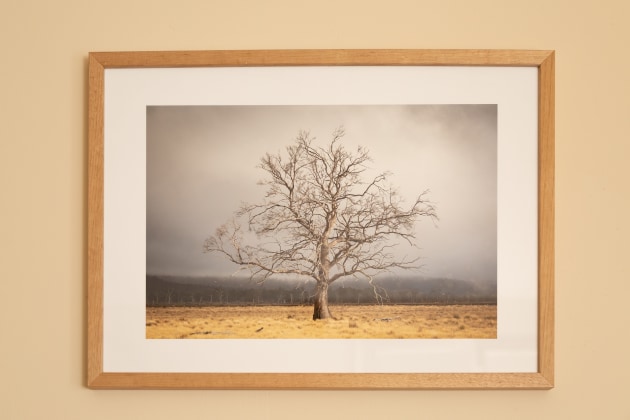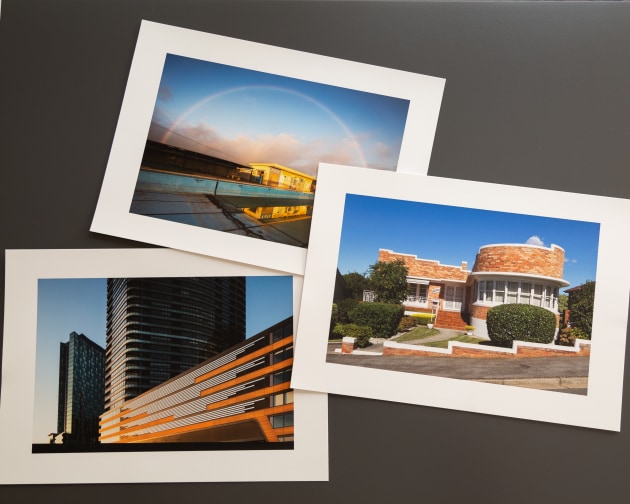A beginner's guide to at home photo printing (Part one)
This is part one of a two part series on at home photo printing. Look out for part two, where we look at soft proofing, paper choice and a start-to-finish printing workflow, next week.
We spend a great deal of time and money investing in camera equipment and editing software, but when was the last time you printed one of your images?
If you have done it recently, it was likely through a mainstream photo lab, and chances are your options for printing were on matte or gloss paper types. Typically, the average punter is constrained by these choices as they are, for large print services, the most economical and practical way to provide prints in large volumes.

However, the downside of this is you’re totally in the hands of the lab when it comes to the output and reproduction quality of your photos, and fine tweaking and the consistency can be variable at best.
Printing your own photos at home provides the opportunity to have fun and be in control of your photography workflow. And while printing at home can seem daunting at first or even a bit frustrating, once you work out your own printing workflow the inconsistency that comes from printing at home can be overcome.
Of course, there can be a lot to think about when printing at home, and this can make things initially quite overwhelming. My first experience with home printing was 20 years ago. I bought a photo printer, and after the initial excitement I was soon disappointed with the results.
With hindsight, it wasn’t the fault of the printer, but instead my lack of knowledge and understanding of the need for a workflow to achieve great prints. While the science of printing and colour management can be very technical, knowing just enough about image science can make all the difference when it comes to obtaining high quality and consistent prints. So let’s get started.
Calibrate and Profile your monitor
I believe calibrating your monitor is one of the best investments you can make in obtaining good quality prints. The process involves the use of hardware that you attach to your monitor that adjusts the colour and contrast values of your screen to a standard.
Many monitors’ contrast ratios are set too high, resulting in oversaturated and bright displays which are not ideal for printing. Printing on a calibrated monitor takes the guesswork out of achieving consistently high quality prints, and solves the common issue of colour casts and/or printing being too dark or bright.
There are several hardware calibration tools available from companies such as Datacolor and X-Rite, and even the cheaper models are automated in their option settings to offer an adequate and no-fuss experience.
The more expensive models, such as the X-Rite i1Display Pro that I use, can be automated, but also come with a range of customisable settings such as luminance and white point settings. I find the luminance settings valuable as I can change them to suit the brightness or darkness of the room I am working in.
When I calibrate my monitor I simply rest the X-Rite device on my screen and follow the software prompts that guide me through the process of calibration. The device then measures a series of colours on my monitor and I save the profile which my monitor then uses every time I boot up my computer. It’s important to calibrate your screen regularly (I try and do mine on a monthly basis) as colours and contrast can shift over time.

Use ICC Printer Profiles
ICC profiles are akin to a recipe that lets your printer know how a particular paper type should be printed on. There are settings in your printer to allow it to make its best calculated choice for how to interpret the colours, but this process is hit or miss, and not using a printer profile can create all kinds of inconsistent results.
I find using an ICC profile ensures the most effective way of being able to achieve consistent prints. Every paper has different characteristics for textures and paper finish so a different profile is required for each paper you’ll be using.
There are two options for obtaining an ICC profile. The first option involves downloading generic profiles from the paper manufacturer. For instance, if I am using a Canson Cotton Rag 310gsm paper I head over to the manufacturer’s website and download the correct profile.

It’s important to check you are downloading the correct paper type that’s compatible with your printer. Once I’ve selected the paper profiles, I follow the instructions from the manufacturer on how to install and use the profiles, and then they are ready to use in Lightroom and Photoshop as options.
Generic profiles are good to use when determining which papers best suit your purposes, as they provide a good baseline in getting consistent prints.
Once I found papers I liked using, I also started creating my own custom ICC profiles. The generic profiles are just that – they are a baseline profile for your printer.
If you would like an even higher degree of fidelity, custom profiles are a wonderful way to achieve this – it means a bespoke profile is created to use with your specific printer. Reputable fine art print shops offer this custom profiling service. It’s just a matter of following their instructions to print a profile target on your printer and paper of choice, and then mailing if off to them.
From there, they will scan your custom-made profile and email it back to you ready to install. Custom profiles provide me with a very accurate print representation, but I am generally very happy with the results of generic profiles for papers I infrequently use.


